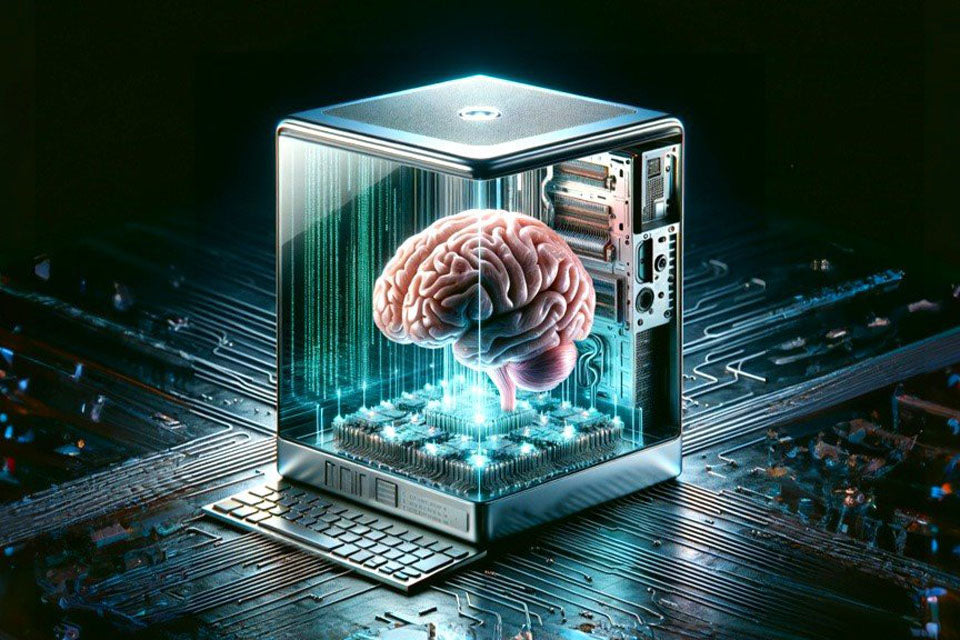
Neuromorphic Computing
Neuromorphic computing is emerging as one of the most transformative technological advancements in the field of artificial intelligence and computing. Inspired by the human brain's architecture and functionality, this approach promises to revolutionize how machines process information, enabling them to perform tasks with unprecedented efficiency and adaptability. In this blog, we'll explore what neuromorphic computing is, its key components, potential applications, and the challenges that lie ahead.
Understanding Neuromorphic Computing
Neuromorphic computing refers to the design and development of computer systems that mimic the neural structure and operation of the human brain. Unlike traditional computing systems, which rely on the von Neumann architecture (where memory and processing are separate), neuromorphic systems integrate memory and processing, much like the neurons and synapses in the brain.
The fundamental units of neuromorphic computing are artificial neurons and synapses, which are designed to emulate their biological counterparts. These units are connected in complex networks, similar to the brain's neural networks, allowing for parallel processing and efficient handling of complex tasks such as pattern recognition, sensory data processing, and real-time learning.
Key Components of Neuromorphic Systems
-
Spiking Neural Networks (SNNs): Spiking Neural Networks are the backbone of neuromorphic computing. Unlike traditional neural networks that use continuous signals, SNNs communicate using discrete spikes, much like the electrical pulses in the brain. This enables more energy-efficient computation and more accurate modeling of biological processes.
-
Memristors: Memristors are a type of non-volatile memory device that can retain information even when the power is turned off. In neuromorphic systems, memristors are used to emulate synapses, allowing for efficient data storage and processing directly in the network, reducing the need for separate memory units.
-
Neuromorphic Chips: Several companies and research institutions are developing neuromorphic chips, which are specialized hardware designed to implement neuromorphic principles. Examples include Intel's Loihi chip and IBM's TrueNorth. These chips are designed to handle complex tasks with much lower power consumption compared to traditional CPUs and GPUs.
Applications of Neuromorphic Computing
The potential applications of neuromorphic computing are vast and diverse. Some of the most promising areas include:
-
Artificial Intelligence (AI): Neuromorphic computing has the potential to take AI to the next level. By mimicking the brain's structure, neuromorphic systems can perform tasks like image and speech recognition, decision-making, and problem-solving more efficiently and accurately. This could lead to AI systems that are more adaptable and capable of learning in real-time from their environments.
-
Robotics: In robotics, neuromorphic computing can enable the development of more autonomous and intelligent robots. These robots could process sensory data in real-time, allowing for more responsive and adaptive behavior. For example, neuromorphic robots could navigate complex environments, recognize objects, and interact with humans more naturally.
-
Healthcare: Neuromorphic computing could revolutionize healthcare by enabling the development of advanced medical devices and systems. For example, neuromorphic processors could be used in brain-machine interfaces, allowing for more precise control of prosthetic limbs or the development of devices that can monitor and respond to neural activity in real-time.
-
Autonomous Vehicles: Autonomous vehicles require rapid processing of vast amounts of sensory data to navigate safely and efficiently. Neuromorphic computing can provide the necessary processing power with lower energy consumption, making it an ideal technology for use in self-driving cars and drones.
Challenges and Future Directions
While the potential of neuromorphic computing is immense, several challenges need to be addressed before it can be widely adopted:
-
Design Complexity: Designing neuromorphic systems is highly complex, as it involves replicating the intricate structure and behavior of the brain. Researchers need to develop more advanced models and tools to design and simulate these systems effectively.
-
Scalability: Scaling neuromorphic systems to handle more complex tasks and larger datasets is another significant challenge. Current neuromorphic chips are still in their early stages, and more work is needed to make them suitable for large-scale applications.
-
Integration with Existing Systems: Integrating neuromorphic computing with existing digital systems and software poses another challenge. Most current systems are built on traditional computing architectures, and transitioning to neuromorphic computing will require significant changes in hardware and software.
-
Energy Efficiency vs. Performance: While neuromorphic computing is inherently more energy-efficient, achieving the right balance between energy efficiency and performance is a challenge. Researchers need to optimize neuromorphic systems to deliver high performance while maintaining low power consumption.
Conclusion
Neuromorphic computing represents a paradigm shift in how we approach computing and artificial intelligence. By mimicking the brain's structure and functionality, this technology has the potential to unlock new levels of efficiency, adaptability, and intelligence in machines. However, realizing this potential will require overcoming significant challenges in design, scalability, and integration.






